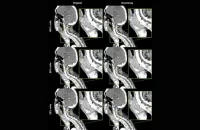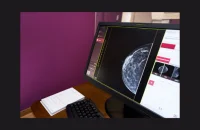Magnetic Resonance Imaging (MRI) is widespread for diagnosing various conditions affecting organs and tissues, aided by Gadolinium-based contrast agents (GBCA) to enhance image clarity. However, the increased utilisation of GBCA in MRI scans is leading to contamination of water systems, challenging previous assumptions about their stability. This poses potential health risks, necessitating a reevaluation of their usage. Collaboration among stakeholders, including manufacturers, healthcare providers, and consumers, is crucial to address this issue. Radiologists can play a proactive role by optimising contrast agent use, minimising waste, and implementing strategies to mitigate contamination. A review of literature up to May 2023 highlights the need for concerted efforts to minimise the environmental impact of GBCA.
Pharmacokinetics and Elimination Dynamics
Gadolinium-based contrast agents (GBCA) are eliminated from the body through a three-compartment pharmacokinetic model. Initially, they are distributed in the plasma and then move to the extravascular extracellular space of tissues. A third compartment, likely located in organs like the skin, liver, spleen, kidney, brain, and bone, acts as a storage compartment. The decay of GBCA concentration involves distribution from plasma to tissue, rapid renal excretion, and slow excretion from the storage compartment. The rate of elimination varies depending on the GBCA type, with macrocyclic GBCA being excreted more rapidly than linear ones. Renal function also affects elimination, with longer retention times in patients with reduced renal function. Linear GBCA, due to its longer residence time in the storage compartment, poses a risk of gadolinium deposition, potentially leading to adverse effects, though no clinical symptoms have been reported thus far.
Safety Concerns and Regulatory Response
Gadolinium-based contrast agents (GBCA) were previously considered safe, but concerns arose in 2006 when an association with nephrogenic systemic fibrosis (NSF) was established. More recently, gadolinium (Gd) deposits were found in various tissues after GBCA administration, even in healthy patients. In 2014, hyperintensity in certain brain regions was linked to repeated use of linear GBCA, particularly in patients with specific conditions. Macrocyclic GBCA didn't show the same effect. Subsequent studies confirmed Gd deposition in animal and human brains, particularly in the dentate nucleus and globus pallidus, with no age or sex dependence. Due to these findings, the European Medicines Agency (EMA) has issued warnings and suspended certain linear GBCA use in the EU.
Increasing Gadolinium-Based Contrast Agent Usage Trends
Since its introduction in 1988, gadolinium-based contrast agents (GBCA) have seen increasing use in MRI scans, with an estimated 750 million doses delivered and an annual usage of 59 million doses as of 2022. Neuroradiology and cardiovascular radiology contribute significantly to this usage. With the patents on most GBCA expired, generics have entered the market, particularly for gadoterate meglumine. The trend is expected to continue due to the rising availability of MRI scanners and expanding indications for MRI examinations. Manufacturers offer GBCA in various packaging sizes, with a trend toward larger volumes. A survey in the Netherlands revealed differences in packaging preference among hospital types, with university hospitals and top clinical teaching hospitals favouring bulk packs. At the same time, general health organisations predominantly used small packs.
Strategies and Innovations for Minimising GBCA Usage and Waste
Various measures aim to reduce the use and waste of gadolinium-based contrast agents (GBCA) in medical imaging procedures. Pre-authorisation of MRI requests involves prior assessment by a radiologist to ensure appropriate indication and use of contrast, leading to reduced overall usage and costs. By scrutinising each request, unnecessary contrast administrations can be avoided, thereby minimising both the financial and environmental costs associated with GBCA use.
Another effective strategy is individualising contrast volume based on clinical need and patient weight. By tailoring the amount of contrast administered to each patient's specific requirements, excess contrast can be avoided, contributing to overall reduction in usage. Furthermore, reducing contrast dose can be achieved through various means. This includes utilising higher-relaxivity GBCA or optimising scanning techniques to achieve sufficient enhancement with lower doses. By leveraging newer compounds with enhanced relaxivity or optimising imaging protocols, the required dose of contrast can be decreased while maintaining diagnostic efficacy.
Enhancement optimisation through acquisition parameters, such as field strength and sequence type, is crucial in minimising GBCA usage. Higher field strengths often allow for reduced doses of GBCA. At the same time, the choice of imaging sequences can influence the enhancement level achieved, potentially reducing the need for high doses of contrast. Postprocessing techniques, including artificial intelligence, offer another avenue for reducing GBCA usage. These techniques can enhance existing contrast or create virtual enhancement, thus decreasing reliance on GBCA-enhanced imaging.
Additionally, alternative sequences, such as non-contrast MRI, are being developed for various clinical tasks, further reducing the need for GBCA. These sequences provide diagnostic information without the use of contrast, minimising patient exposure to GBCA and its associated risks.Alternative contrast agents, such as ultra-small superparamagnetic iron oxide particles (USPIOs) and manganese-based agents, offer alternatives to GBCA. While research into their safety and efficacy is ongoing, they present promising options for reducing reliance on gadolinium-based agents.
Measures to reduce contrast waste encompass employing multi-patient injection systems, using larger packaging sizes, and utilising saline flushes to minimise contrast waste. Proper disposal methods, including separate collection and recycling of uncontaminated contrast media residues, prevent environmental contamination. Pilot studies have explored innovative approaches, such as using disposable urine bags or prolonging in-hospital time for outpatients, to collect contrast residues. These initiatives aim to reduce the amount of GBCA entering sewage water and mitigate environmental impact.
Advances and Collaborative Approaches Towards Sustainability
The healthcare sector is increasingly prioritising sustainability, with efforts to reduce environmental impact and improve sustainability seen in hospitals and pharmaceutical companies. Manufacturers are implementing measures to reduce water and energy consumption, optimise waste management, and use eco-designed packaging. A new generation of gadolinium-based contrast agents (GBCA) with high-relaxivity macrocyclic properties has been developed, allowing for reduced dosage compared to older products. Companies like Bracco and Guerbet have collaborated on gadopiclenol, while Bayer launched gadoquatrane, though it's still undergoing clinical development. The growing global demand for contrast media, alongside the scarcity of raw materials like gadolinium, necessitates sustainable resource management practices. Recycling contrast media from patients' urine could contribute to a circular process and conservation of resources.
Sustainability efforts in radiology are evolving, with limited public data available. However, implementing various measures together can significantly reduce gadolinium in the water environment. To address the presence of GBCA in water systems, collaboration among all stakeholders, from contrast medium producers to drinking water consumers, is crucial. By working together, environmental exposure to GBCA can be minimised, emphasising the importance of informed decision-making among healthcare professionals regarding GBCA usage.
Source: Insights into Imaging
Image Credit: iStock








